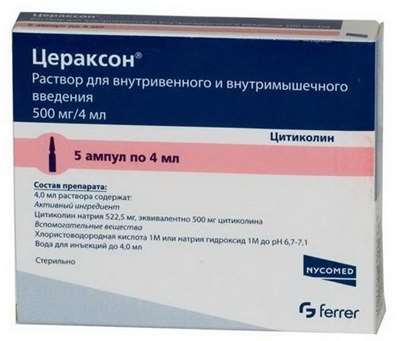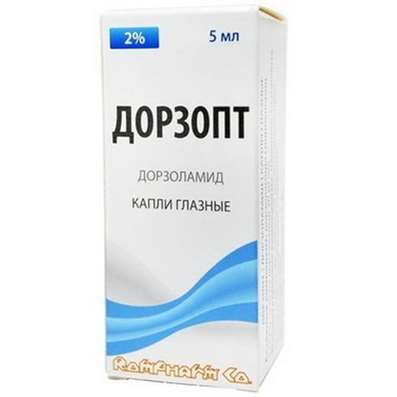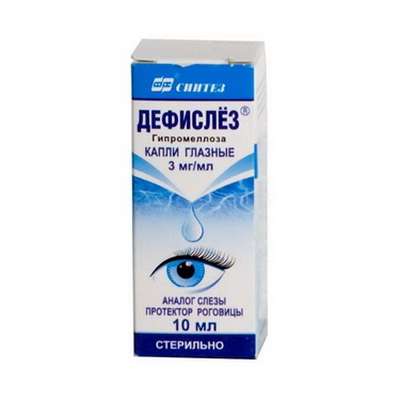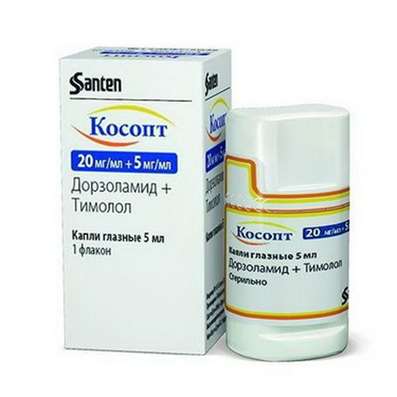Instruction for use: Trenpental
I want this, give me price
Dosage form: Concentrate for solution for intravenous and intra-arterial administration, Solution for intravenous and intraarterial administration, Coated tablets
Active substance: Pentoxyphyllinum
ATX
C04AD03 Pentoxifylline
Pharmacological group
Antiaggregants
Adenosinergic agents
Angioprotectors and microcirculation correctors
The nosological classification (ICD-10)
G93.4 Unspecified Encephalopathy: bilirubin encephalopathy; lacunarity status; Tremor when portal-systemic encephalopathy; The latent hepatic encephalopathy; Atherosclerotic encephalopathy; Hypertensive encephalopathy; hypoxic encephalopathy; dismetabolic encephalopathy; Encephalopathy; brain lesion; Porto-caval encephalopathy; Vascular encephalopathy; Traumatic encephalopathy; encephalopathy; encephalopathy; Encephalopathy secondary genesis; Encephalopathy discirculatory; Encephalopathy portocaval; epileptic encephalopathy; hemorrhagic shock and encephalopathy syndrome; Subacute spongiform encephalopathy
H35 Other retinal disease: retinal degeneration; Retinal degenerative changes in the eye; Subacute and chronic insufficiency of blood circulation in the retina or choroid
H74 Other diseases of middle ear and mastoid process
H83 Other internal ear disorders: Disturbance of inner ear function; Violation of the inner ear function of vascular genesis; Disturbances of blood supply to the inner ear; Functional disorder of the inner ear
I63 Cerebral infarction: ischemic Stroke; Ischemic brain disease; Ischemic stroke; Ischemic stroke and its consequences; Ischemic cerebral stroke; Ischemic cerebrovascular accident; Ischemic brain damage; Ischemic brain damage; ischemic conditions; Cerebral ischemia; Acute hypoxia brain; Acute cerebral ischemia; Acute ischemic cerebrovascular accident; Acute cerebral infarction; Acute ischemic stroke; Acute period of ischemic stroke; Focal cerebral ischemia; Ischemic stroke; recurrent stroke; The syndrome of Morgagni-Adams-Stokes; Chronic cerebral ischemia; cerebrovascular stroke; embolic stroke; Ischemic brain damage
I64 Unspecified Stroke as a bleeding or heart attack: Primary stroke; Stroke; Stroke in the course of; microstroke; stroke; The completed stroke
I70 Atherosclerosis: Atherosclerosis; Atherosclerosis of peripheral vessels; Atherosclerotic changes; Atherosclerotic vascular changes; Atherosclerotic disorders; spontaneous; Trombangioz obliterans; Frinlendera disease
I73 Other peripheral vascular disease: peripheral angiopathy; limb arteriopathy; The disease of arteries; Violations of peripheral arterial circulation; Lack of blood flow arteriovenous; Obliterating diseases of arteries; occlusive disease; Occlusive disease with severe intermittent claudication; obliterating diseases of arteries; Chronic obliterating peripheral arterial disease; endarteritis obliterans; Ischemic lesions stop
I73.0 Raynaud's Syndrome: Raynaud's syndrome Leriche; Raynaud's disease; Raynaud's phenomenon; RaynaudLeriche syndrome; Raynaud's disease; Raynaud's syndrome with trophic disorders; Peripheral angiopathy
I73.1 thromboangiitis obliterans [Buerger's disease]: Berger's disease; thromboangiitis obliterans; trombangiit; thromboangiitis obliterans; Buerger's disease
I79.2 Peripheral angiopathy in diseases classified elsewhere: diabetic angiopathy; Angiopathy in diabetes; arteriosclerosis diabetic; Pain in lesions of peripheral nerves; Diabetic angiopathy; Diabetic microangiopathy; Diabetic vascular disease; Intermittent angioneurotic disbaziya; Macroangiopathy in diabetes; microangiopathy; Microangiopathy in diabetes mellitus; Tingling sensations in the hands and feet; Coldness in the extremities; Peripheral angiopathy; Peripheral arterial disease; Sclerosis Menkeberga; Chronic obliterating diseases of arteries
I83.0 Varicose veins of lower extremities with ulcer: Varicose ulcer of lower leg; Trophic ulcers of lower extremities; Varicose ulcer
I87.0 Postphlebitic syndrome: post-thrombotic venous insufficiency; Postthrombotic disease; Post thrombophlebitic syndrome; Post-thrombophlebitis; Post-thrombophlebitic syndrome; Postphlebitic syndrome; Post thrombotic syndrome; Postphlebitic syndrome (stasis syndrome)
I87.2 Venous insufficiency (chronic) (peripheral): Painful foot fatigue; The pain and feeling of heaviness in the legs; The pain of chronic venous insufficiency; Venous insufficiency; Venous insufficiency of the lower limbs; Venous-lymphatic insufficiency; Venous edema; phlebostasis; Ischemic lesions stop; Lipedema; Microcirculatory-trophic disorders; Violation of venous circulation; Violation of venous circulation of the lower limbs; Disorders of venous circulation; Disorders of the peripheral circulation in the extremities; Lack of chronic venous; Insufficiency of venous circulation; Organic venous insufficiency of the lower limbs; Acute venous insufficiency of the lower limbs; Swelling in the legs; limb edema; Swelling in the legs; Swelling of lower limbs due to chronic venous insufficiency; Swelling of the legs; Edematous pain in venous insufficiency; Swelling and pain in the legs; The feeling of heaviness in the legs; Prevarikozny syndrome; The static heaviness in the legs; Trophic tissue changes; Trophic tissue disorders; Trophic disorders; Heaviness in the legs; Fatigue in the legs; Chronic venous insufficiency; Chronic venous insufficiency of the lower limbs; Chronic ischemic disease of the lower extremities; Chronic insufficiency of venous circulation; The feeling of heaviness in the legs; The feeling of heaviness in the legs during pregnancy; The feeling of heaviness in the legs after prolonged standing
L98.4.2 * Trophic skin ulcer: Varicose ulcer; Varicose ulcers; Cutaneous ulcer; Non-healing ulcers; Trophic ulcer; Trophic ulcer of lower leg; Trophic skin lesions; Trophic after-burn ulcers; Trophic ulcers; Trophic skin ulcers; Ulcer of lower leg; Ulcer of skin; Ulcer of trophic skin; Ulcer on legs; Ulcerative necrosis of the skin; Ulcer of shin; Ulcer of the lower leg; Ulcers of lower extremities; Difficult healing ulcers
R02 Gangrene, not elsewhere classified: Atherosclerotic gangrene; Gangrene; Gangrene of the extremities; The fire of Saint Anthony
R20.2 Paresthesia of the skin: Paroxysmal paresthesia; Paresthesia
T33-T35 Frostbite
Composition and release form
1 tablet, coated with a coating, contains pentoxifylline 0.1 g; In a contour acheive box 10 pcs., In a cardboard bundle 6 packages.
1 ml solution for injection - 0.02 g; In ampoules of 5 ml, in the outline of the cell 5 ampoules, in a cardboard bundle 1 package.
Pharmacology
Mode of action - Improving microcirculation.
Inhibits phosphodiesterase and adenosine receptors, promotes the accumulation of cAMP in cells. Improves the rheological properties of blood (reduces the adhesion of red blood cells, platelet aggregation, blood viscosity).
Indications of Trenpental
Violation of peripheral circulation, caused by atherosclerosis, diabetes mellitus (diabetic angiopathy), inflammation; Acute and chronic disorder of cerebral circulation of the ischemic type; Atherosclerotic and discirculatory encephalopathy, angiopathy (paresthesia, Raynaud's disease); Trophic tissue disorders due to insufficient arterial or venous microcirculation (trophic ulcer, postthrombophlebitic syndrome, frostbite, gangrene); Obliterating endarteritis; Acute, subacute and chronic circulatory failure in the retina or in the choroid of the eye; Hearing loss of vascular genesis, accompanied by hearing loss.
Contraindications
Hypersensitivity, incl. to the xanthine derivatives (theophylline, caffeine, aminophylline, theobromine), acute myocardial infarction, massive bleeding, hemorrhagic stroke, retinal hemorrhage, severe coronary atherosclerosis and cerebral vessels, severe arrhythmias, age 18 years.
Pregnancy and breast-feeding
Not recommended. At the time of treatment should stop breastfeeding.
Side effects
Tablets: most often - nausea, vomiting, epigastric pain, dyspeptic phenomena; Less often - headache, dizziness, increased nervousness, skin allergic reactions; Rarely - lowering blood pressure, angina, arrhythmia; In some cases - jaundice, an increase in the level of hepatic enzymes (transaminase, alkaline phosphatase).
There are separate reports on the possibility of bleeding (from the gastrointestinal tract, into the skin, into the mucous membranes), thrombocytopenia and aplastic anemia
Solution for injection: redness of the face, sensation of heat and burning of the skin, lowering of blood pressure, arrhythmias, chest pain, dizziness.
Interaction
Strengthens the effect of drugs that affect the blood clotting system (indirect and direct anticoagulants, thrombolytics), the effect on the blood coagulation system of cefamandole, cefoperazone, cefotetan, moxalactam, plikamycin, valproic acid; Enhances the effect of antihypertensive and antidiabetic agents (both insulin and oral hypoglycemic agents).
Cimetidine increases the concentration of pentoxifylline in the plasma (the frequency of side effects of the latter may increase).
Simultaneous prescribing with other drugs of this group can enhance CNS excitation.
Dosage and Administration
Inside, after eating, 0.2 g 3 times a day, if necessary, the dose is gradually increased to 1.2 g / day and taken in 2-3 doses. Course - 1-3 months.
I.V., intraarterial. I.V. drip slowly slowly - in a dose of 0.1 g in 250-500 ml of isotonic sodium chloride solution or in 5% glucose solution (duration of administration - 90-180 min), in / a - first in a dose of 0.1 g in 20 -50 ml of isotonic sodium chloride solution, in subsequent days - 0.2-0.3 g in 30-50 ml of solvent (injection rate: 5 ml for 10 min).
Precautionary measures
Treatment should be carried out under the regular supervision of a picture of blood.
Patients with severe renal dysfunction require particularly careful medical supervision.
If during the treatment there are hemorrhages in the retina of the eye, the drug is immediately canceled.
With special care, under close medical supervision appoint patients with atherosclerosis of cerebral and / or coronary vessels, especially in the case of arterial hypotension and disturbance of the heart rhythm.
With caution appoint patients with peptic ulcer of the stomach and duodenum, recently underwent operative intervention (risk of bleeding).
Patients with labile blood pressure and a tendency to arterial hypotension, as well as with pronounced impaired renal function, increase the dose gradually and select individually.
Special instructions
The compatibility of the solution for injection with infusion solutions must be checked in each case.
When carrying out the infusion, the patient should be in a prone position.
Storage conditions of Trenpental
In the dark place at a temperature of no higher than 25 ° C.
Keep out of the reach of children.
Shelf life of Trenpental
2 years.
Do not use after the expiry date printed on the package.

 Cart
Cart





